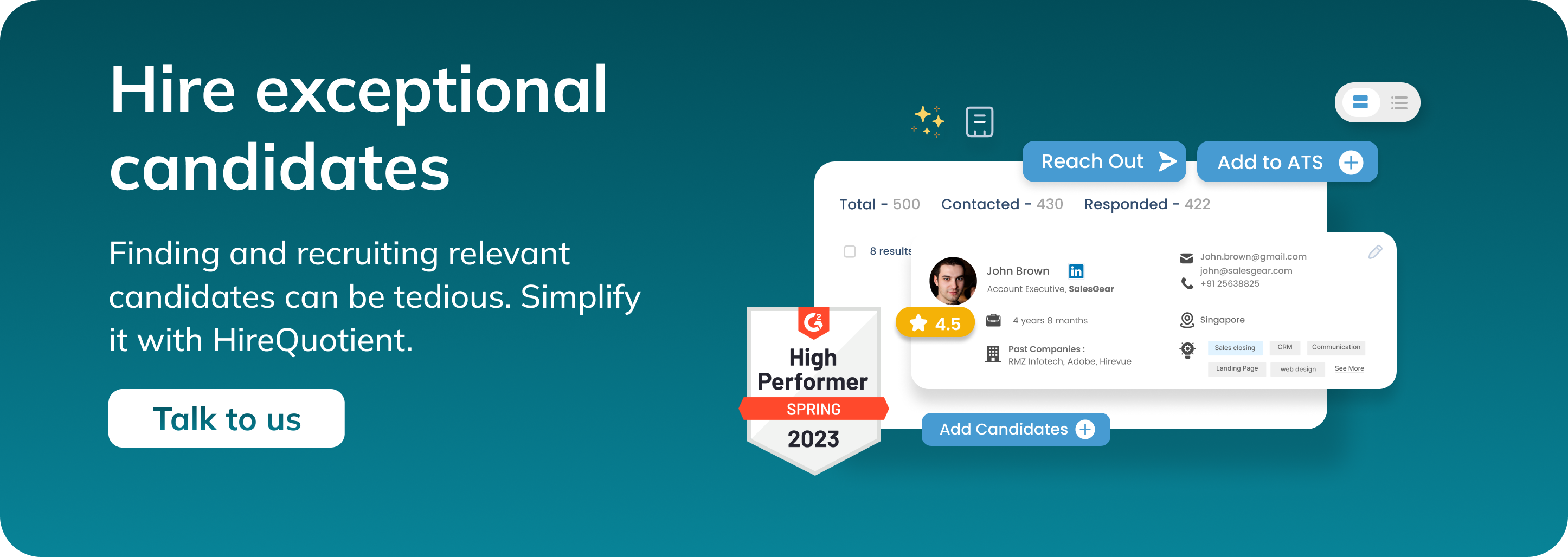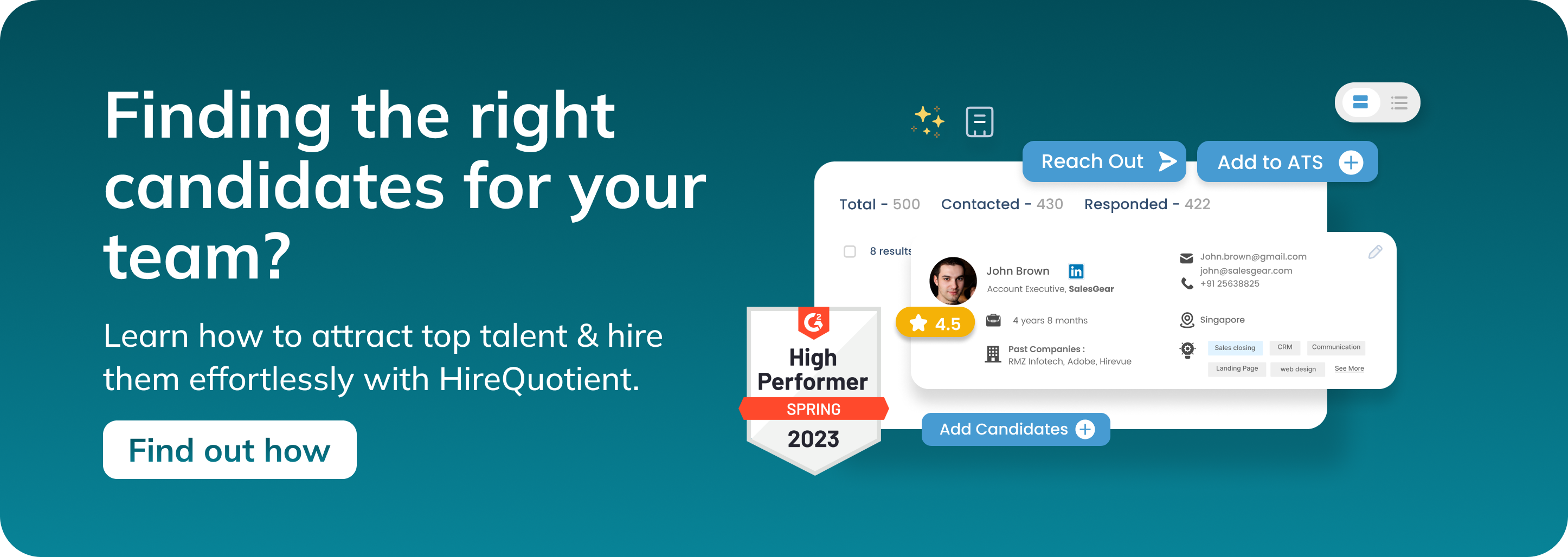What is Recency Bias in the workplace?
Published on May 1st, 2023
Decision-making processes are crucial in determining the success and fairness of an organization. One of the cognitive biases that can significantly impact these decisions is recency bias. Also known as the recency effect, this bias causes individuals to place undue emphasis on the most recent information or events, often at the expense of a more comprehensive evaluation.
In the workplace, recency bias can lead to skewed performance reviews, unfair evaluations, and strained team dynamics. Understanding and addressing recency bias is essential for creating a fair and equitable work environment, where employees are judged based on their overall contributions rather than just their latest achievements.
This blog explores the concept of recency bias, its implications in the workplace, and strategies to mitigate its effects, ensuring that all employees are valued and assessed fairly. So, let's get started!
What is Recency Bias?
Recency bias, also known as the recency effect, is a cognitive bias that causes people to give disproportionate weight to the most recent information they have encountered. This can influence various decisions and judgments, leading to an over-emphasis on the latest events rather than considering a broader time frame.
For example, if an employee just completed a difficult project last week, they might be rated higher than another employee who has been performing consistently well in their role but hasn’t had any major accomplishments recently.
Thus, in simple words, Recency bias means placing undue importance on the latest information when making decisions or forming opinions. This can skew judgments and lead to decisions that don’t fully consider all relevant data, especially older information that may be equally or more important.
To know more, also read: Recency Bias
Recency Bias Definition
Recency bias is the tendency to focus on the most recent information or experiences when making decisions or evaluations. This cognitive bias can affect memory, perception, and behavior, leading individuals to prioritize what happened most recently over older, potentially more relevant, information.
This type of bias can lead to unfairness in evaluations and rely heavily on employees’ most recent performance rather than looking at their full history or potential. It can also lead to longer-term consequences for those affected by it. As per the latest stats, when employees experience recency bias in the workplace, they are 18% more likely to become disengaged and 48% more likely to leave their jobs.
Recency bias can also cause issues beyond individual performance: it can lead to problems in team dynamics, with newer members being favored over those who have been around longer or experienced more success. This can result in a lack of trust and collaboration among team members, leading to decreased productivity and revenue losses for an organization.
Recency Bias Example
In a workplace setting, recency bias can manifest during performance reviews. For instance, if an employee recently completed a high-profile project successfully, a manager might rate them more favorably than a colleague who has consistently performed well but hasn’t had any standout achievements recently. This could lead to an unfair evaluation that doesn’t accurately reflect the employees’ overall performance.
Also read: What is Primacy and Recency Bias in Context to Hiring?
Opposite of Recency Bias
The opposite of recency bias is primacy bias. Primacy bias occurs when an individual is more influenced by the first information they receive rather than more recent data. This can lead to a lasting impression based on initial experiences, which might overshadow more recent developments.
How to Avoid Recency Bias
Overcoming recency bias is an important part of creating a fair and equitable work environment. Some of the things to consider to avoid bias are:
1. Comprehensive Evaluation: When assessing performance, managers should focus on fact-based analysis rather than subjective opinion when evaluating employees’ performances, looking at the entire history of accomplishments as well as potential future contributions.
2. Regular Feedback: Provide consistent and regular feedback to employees throughout the year, not just during annual reviews.
3. Structured Review Process: Implement a structured evaluation process that includes multiple data points and inputs from various sources.
4. Training and Awareness: Conduct training sessions on diversity, inclusion, and cognitive biases for managers and decision-makers to increase awareness and reduce the impact of biases.
5. Use of Technology: Leverage tools and technologies that help in providing objective assessments based on data rather than subjective opinions.
Recency bias can have a damaging effect on an organization's performance, leading to distrust among colleagues, lower productivity, and decreased revenue for the company. By taking proactive steps such as implementing fair policies, conducting unbiased evaluations based on facts rather than opinions, and developing unconscious bias training programs, organizations can help reduce recency bias in the workplace.
What is Recency Bias in the Workplace?
Impact of Recency Bias in the Workplace
Recency bias in the workplace can lead to skewed evaluations and unfair assessments of employee performance. For instance, an employee who recently completed a difficult project might be rated more favorably than a colleague who has consistently performed well but hasn’t had any notable recent achievements. This can result in:
- Unfair Evaluations: Relying heavily on recent performance can overlook an employee's overall contributions and potential.
- Employee Disengagement: Employees who feel undervalued due to recency bias are more likely to become disengaged and might consider leaving the organization.
- Team Dynamics Issues: Favoring newer or recently successful team members over others can lead to mistrust and decreased collaboration within teams.
Overcoming Recency Bias
To create a fair and equitable work environment, it’s crucial to minimize recency bias. Here are some steps organizations can take:
- Fact-Based Analysis: Focus on objective data and the full history of an employee’s performance.
- Fair Policies: Develop transparent policies to ensure evaluations are based on comprehensive data.
- Training Programs: Regularly train employees and managers on unconscious bias and diversity to reduce the impact of biases.
- Use of Technology: Employ tools like EasySource, which uses AI to help in unbiased candidate sourcing and evaluation.
Conclusion
Recency bias can have detrimental effects on an organization, including decreased productivity, employee disengagement, and revenue losses. By implementing fair policies, conducting unbiased evaluations, and providing training on unconscious bias, organizations can reduce recency bias. This leads to improved team dynamics, higher morale, and greater success overall. Taking proactive steps to mitigate recency bias is essential for creating a healthier and more equitable workplace.
Technological Solutions
The recruiting sector can particularly benefit from technological solutions to reduce recency bias. Tools like EasySource are designed to help recruiters eliminate bias through advanced AI and machine learning capabilities. EasySource is a Google Chrome extension that facilitates candidate outreach using LinkedIn, offering features like pre-made templates and sophisticated filters to find highly relevant prospects, including those with US work authorization. By leveraging AI and tools, recruiters can create highly tailored LinkedIn messages and invitations, ensuring a fair and unbiased hiring process.
By incorporating these strategies and tools, organizations can significantly reduce the impact of recency bias, leading to a more equitable and productive workplace.
Authors

Soujanya Varada
As a technical content writer and social media strategist, Soujanya develops and manages strategies at HireQuotient. With strong technical background and years of experience in content management, she looks for opportunities to flourish in the digital space. Soujanya is also a dance fanatic and believes in spreading light!
Hire the best without stress
Ask us how
Never Miss The Updates
We cover all recruitment, talent analytics, L&D, DEI, pre-employment, candidate screening, and hiring tools. Join our force & subscribe now!
Stay On Top Of Everything In HR



